We provide an overview of some of the content related to "BUGAKU" to help you understand “REIDO” and “KOKOROZASHI-REI-HO”.
The important thing is to build on the foundation.
Merely obtaining information on the Internet does not mean that you understand it.
There are things that can only be conveyed in a real setting, so it is necessary to experience the basics of “BUGAKU” at an authorized practice session.
The basics cover a wide range of topics, so it is necessary to continue practicing.
Without a deep understanding of the basics, it is impossible to understand “REIDO” or “KOKOROZASHI-REI-HO”.
However, what is described on this page is mere information and an overview.
There are things that can only be conveyed in a real setting, so it is necessary to experience the basics of bu gaku at an authorized practice session.
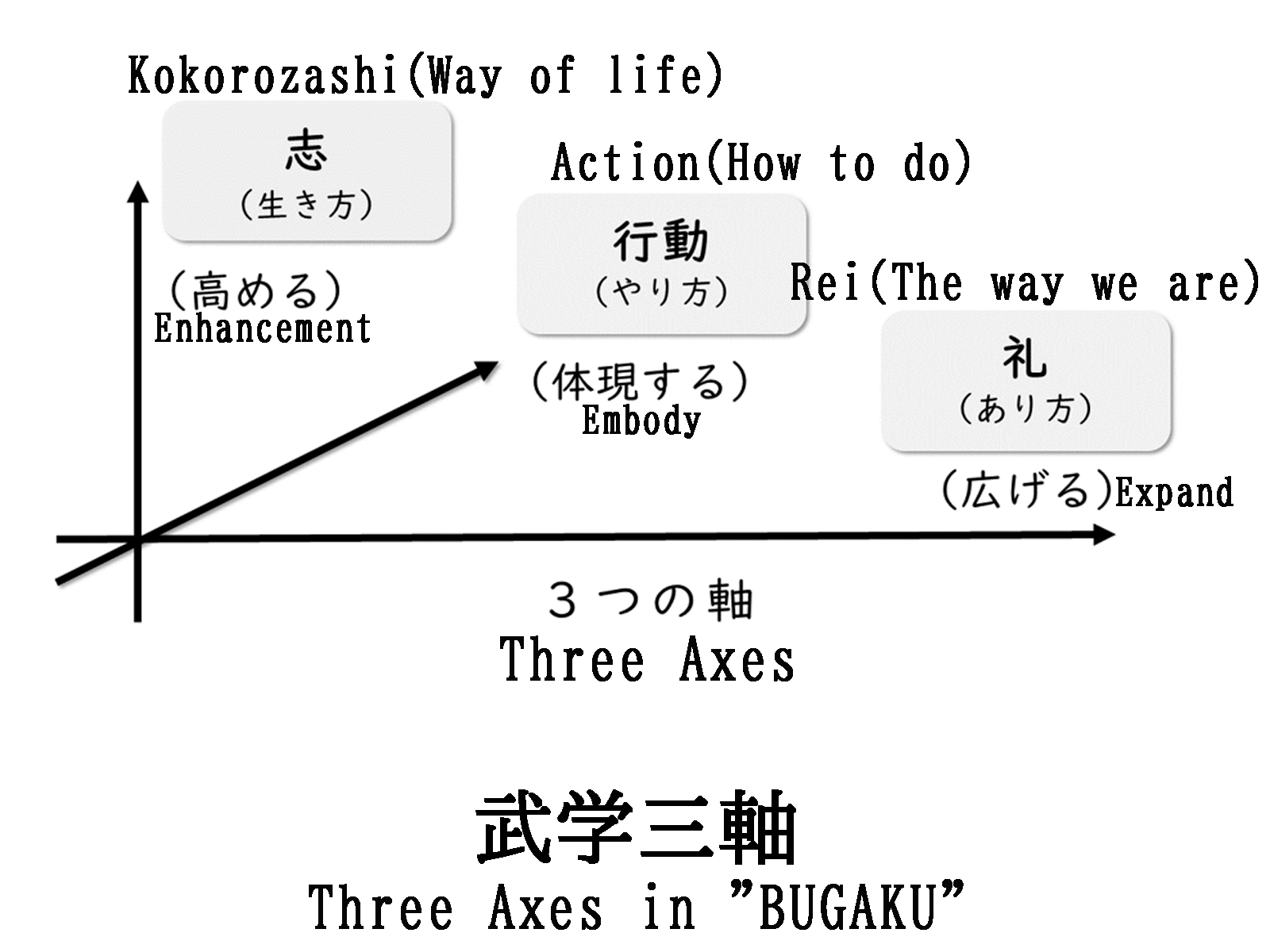
The first step is to understand the "Three Axes of “Bugaku””.
The "Three Axes of “Bugaku”" are the three axes of "KOKOROZASHI," "REI," and "Action," and are a three-dimensional structure.
| KOKOROZASHI | Enhance | Way of life | Life Purpose and Self-oriented |
|---|---|---|---|
| REI | Expand | Way of being | Adhering with others, autonomy |
| Action | Embody | How to do it | Act to embody your “KOKOROZASHI” |
By balancing the "Three Axes of “BUGAKU”," we will create our own lives as the subjects of our lives, just as we weave fabric (the fabric of life) to make clothes.
“KOKOROZASHI", "REI", and "Action" are closely intertwined and do not stand alone.
With "KOKOROZASHI" alone, it is easy to develop the belief that you are better than others.
“REI" alone can easily lead to accepting other people's opinions and living other people's lives.
“Actions” alone can easily lead to being swept away by the lack of a consistent axis.
The three axes of KOKOROZASHI, REI, and Action are called the "Three Axes of “BUGAKU”," and it is important to keep them in good balance.
Any one of them alone will cause bias, and lack of balance in any one of them will cause bias.
By being well balanced, we are able to contribute to others.
In “BUGAKU”, we use nonverbal interpersonal training to build up our practice.
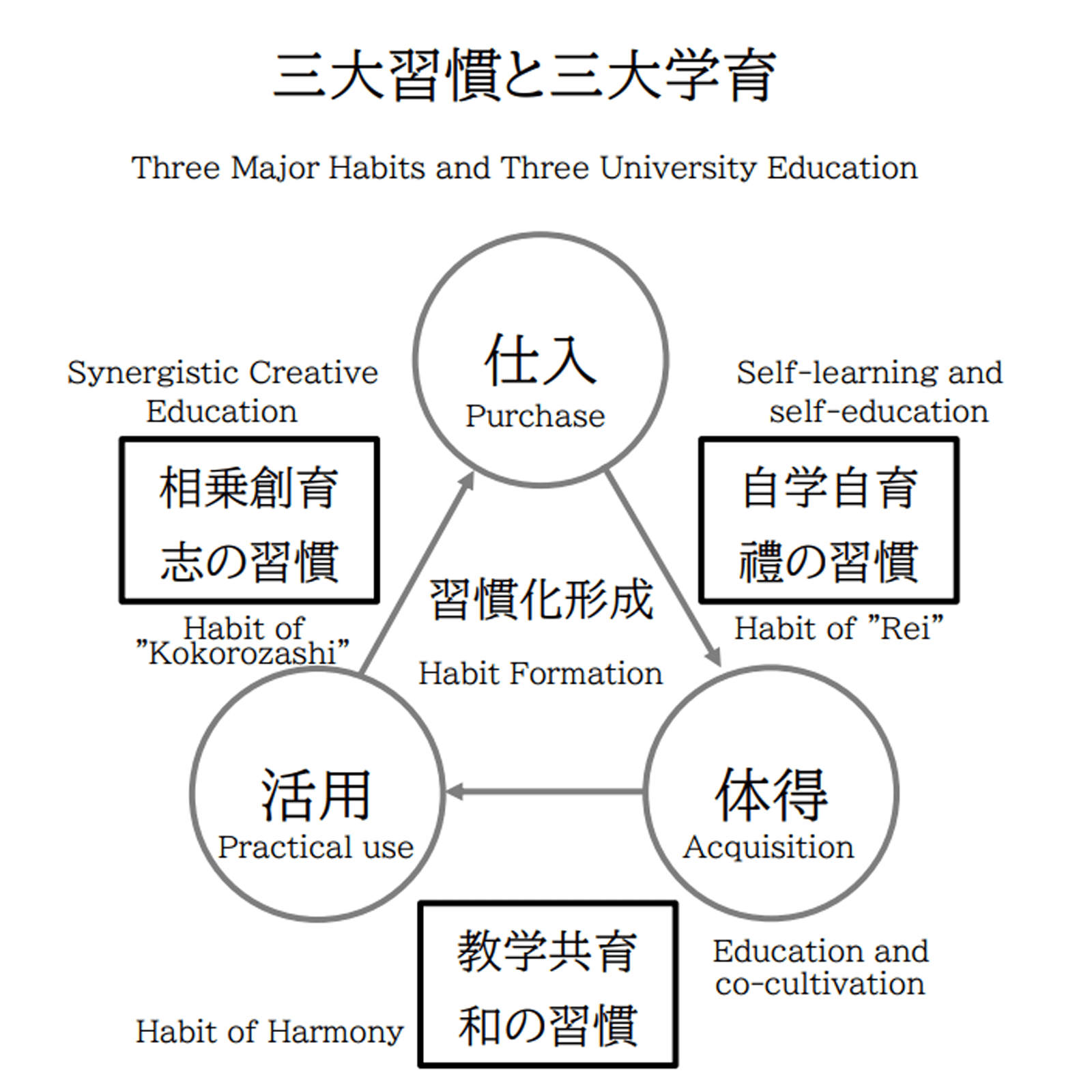
The important thing to utilize in daily life is habit formation.
We call the elements necessary for habit formation “The Three Major Habits and the Three University Educations”.
There are important things for you to learn and use in your daily life.
-Acquire through repetition(Acquisition)
-Apply to daily life(Practical use)
Just viewing this page is merely touching knowledge.
It is important to "make it a habit”.
If there is nothing to " Acquisition " or " Practical use," there is no need to "Purchase."
| Purchase | 1% of all | Concepts for actual work will be provided. |
|---|---|---|
| Acquisition | 99% of all | The process is repeated until it is mastered. |
| Practical use | It is applied to life and work. |
| Purchase→Acquisition(Self-learning and self-education) | Habit of “Rei” | We do iterations to acquire them. |
|---|---|---|
| Acquisition→Practical use(Education and co-cultivation) | Habit of “Harmony” | Recognize your own level of understanding through output. |
| Practical use→Purchase(Synergistic Creative Education) | Habit of “Kokorozashi” | Create something new, beyond the level of the purchase. |
practice is everyday life.
The most important place to practice is in daily life. It is important to know how much to use what you have acquired, and it is necessary to acquire the skills to put them to use.
It is necessary to purchase after clarifying what to use and how to use it, and what to acquire in order to do so.
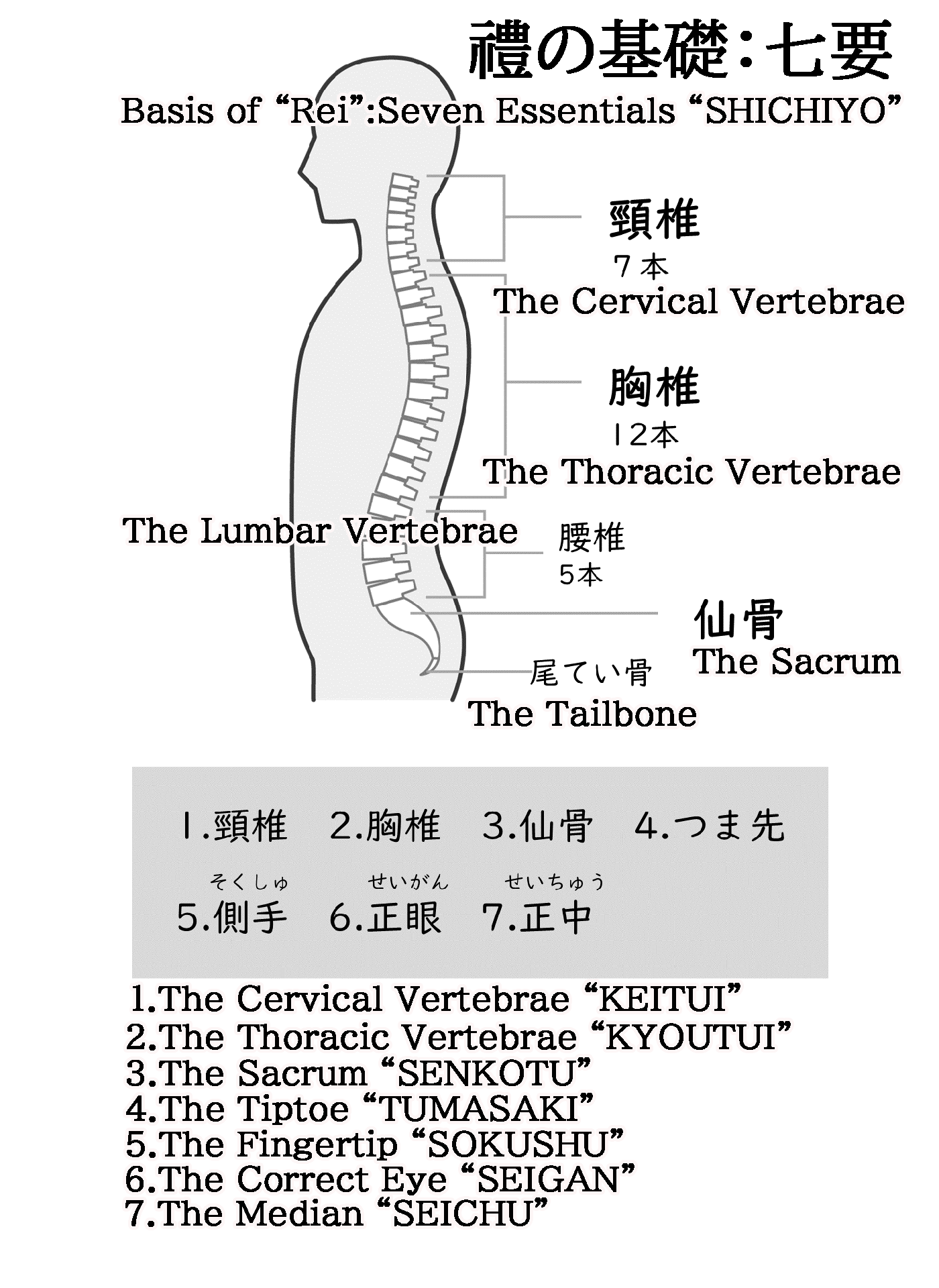
The foundation for correct "Rei" is "SHICHIYO" (seven essentials).
By preparing the seven points, correct “Rei” can be performed.
It is important to note that each person is different in height and weight, so imitating someone else may not be correct.
There are in-person checking methods available, so it is necessary to check if you are doing it right.
In addition, it is important to check by using the check method each time, as the physical condition changes daily.
The basis for adjusting oneself to one's own body is "SHICHIYO," which can be easily checked to see if one is in a state of “Rei”.
It is necessary to adjust oneself in relation to others and cannot be checked by oneself alone, so interpersonal practice is important.
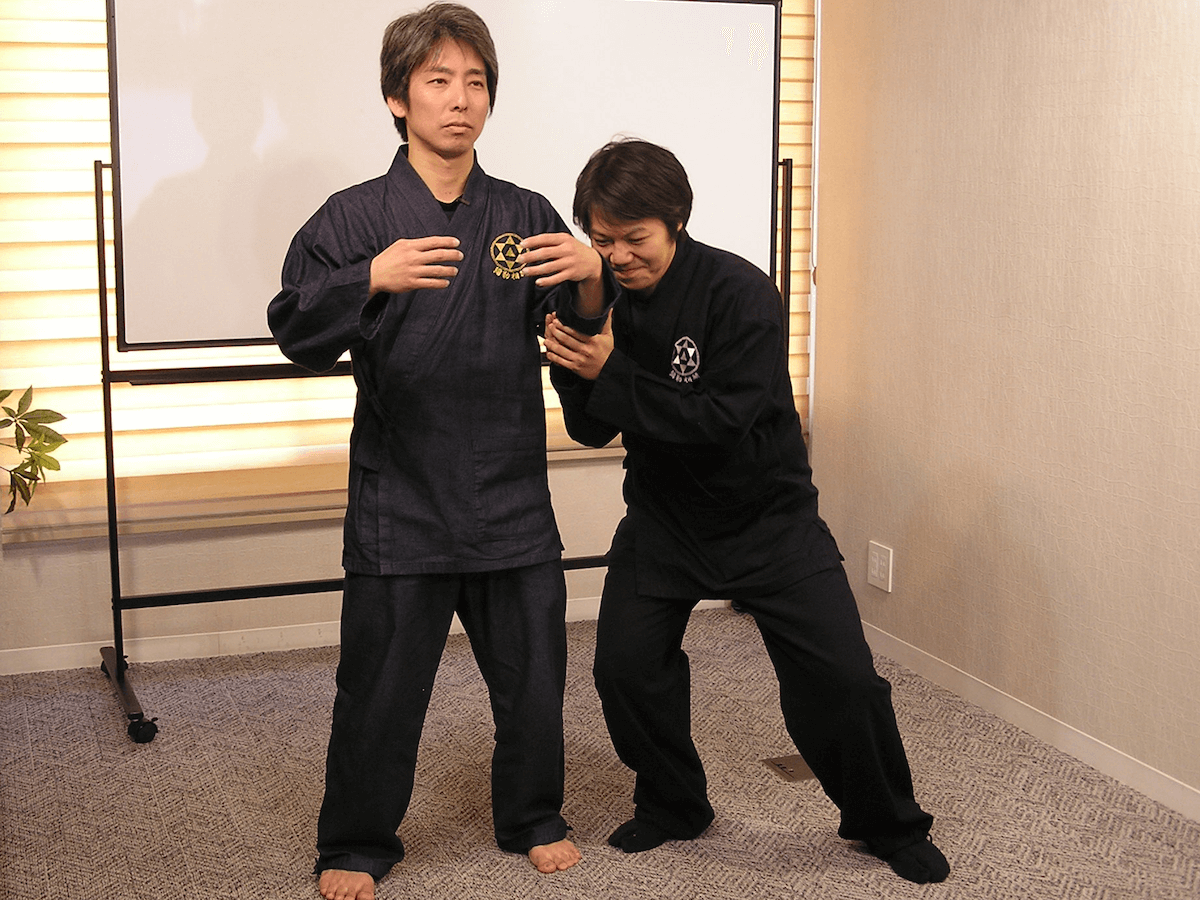
Once you have mastered the "SHICHIYO",
the foundation for correct "Rei",
you will continue with "SHICHISEI".
This is the next step in order to
perform correct “Rei” more correctly.
The "SHICHISEI" are those that make the state of “Rei” more stable.
The "SHICHIYO" approach the skeletal structure, while the " SHICHISEI " add active movement of the muscles.
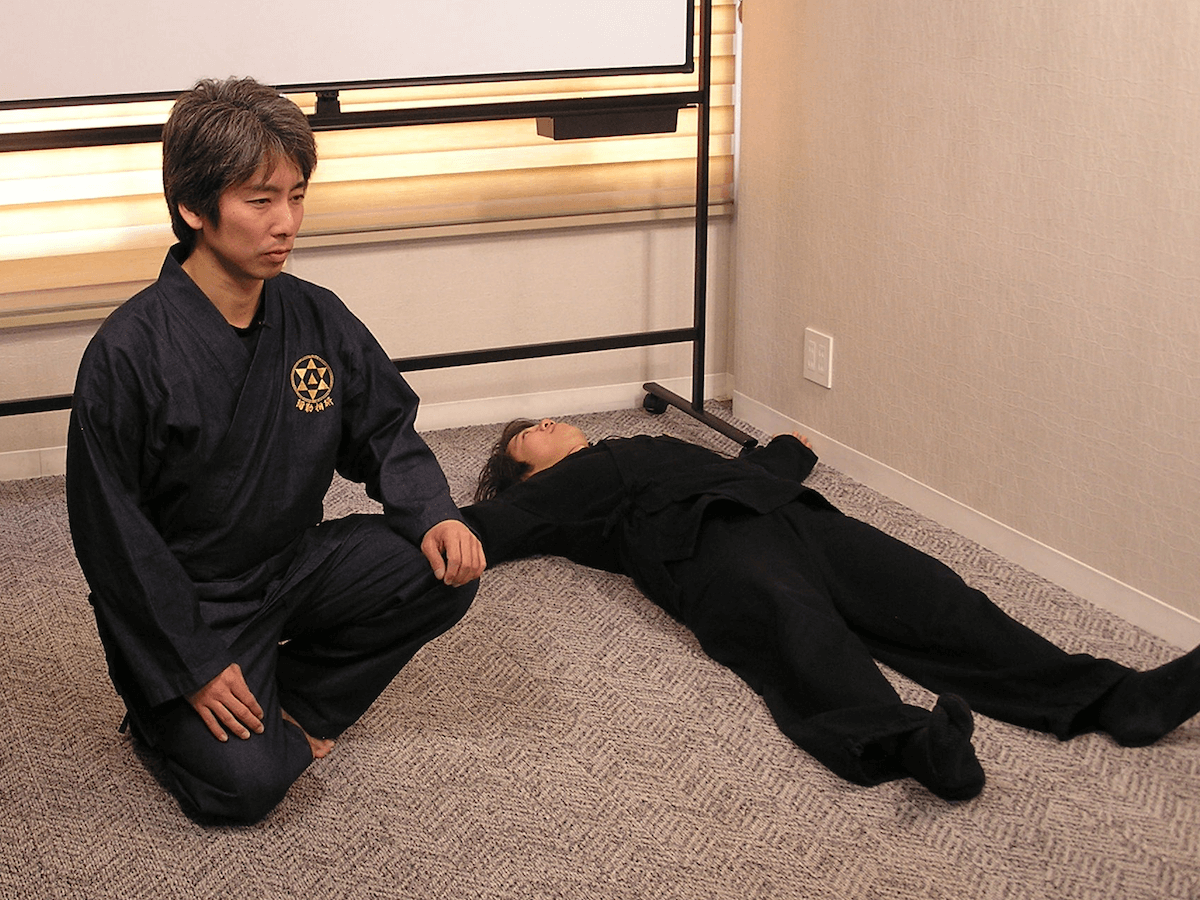
The "JIRITSU-ZEN-HO” is,
It is a practice to cultivate your "body axis".
Walking, sitting, sleeping, and getting up
without using your hands,
It can be practiced in daily life.
You can also practice at a speed
at which you can stop at any time,
It is also important to be aware of
where you are moving now.
It is a practice to control and move the body by using the smallest parts of the body to perform movements that we take for granted in our daily lives, such as walking, stopping, balancing on one leg, sitting, sleeping, getting up, and so on.
It is one of the basic practices that can reduce the risk of injury and unnecessary force, and can be done at any time in daily life.
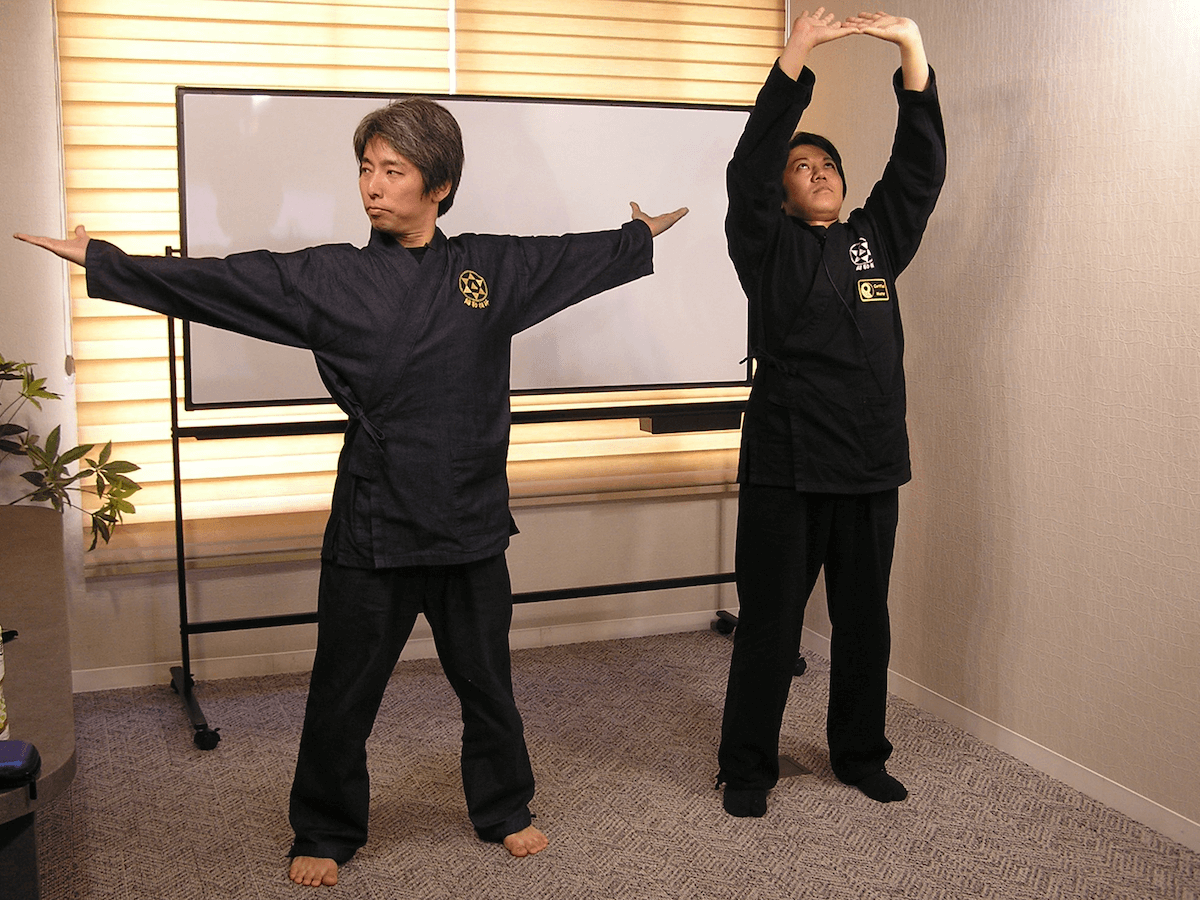
The "Suzaku Method" is
a continuous menu for building
the foundation of the body.
The Suzaku Method consists of
the three basic elements of
“SHINDO-HO(Vibration method)”,
“TONO-HO(Exhalation method)”,
and “TANTOKO(Standing Meditation)”.
The Suzaku Method has three basic exercises: SHINDO-HO(Vibration method), TONO-HO(Exhalation method), and TANTOKO(Standing Meditation).
These exercises are designed to gradually build and stabilize one's axis.
It is a practice that anyone can easily tackle and continue.
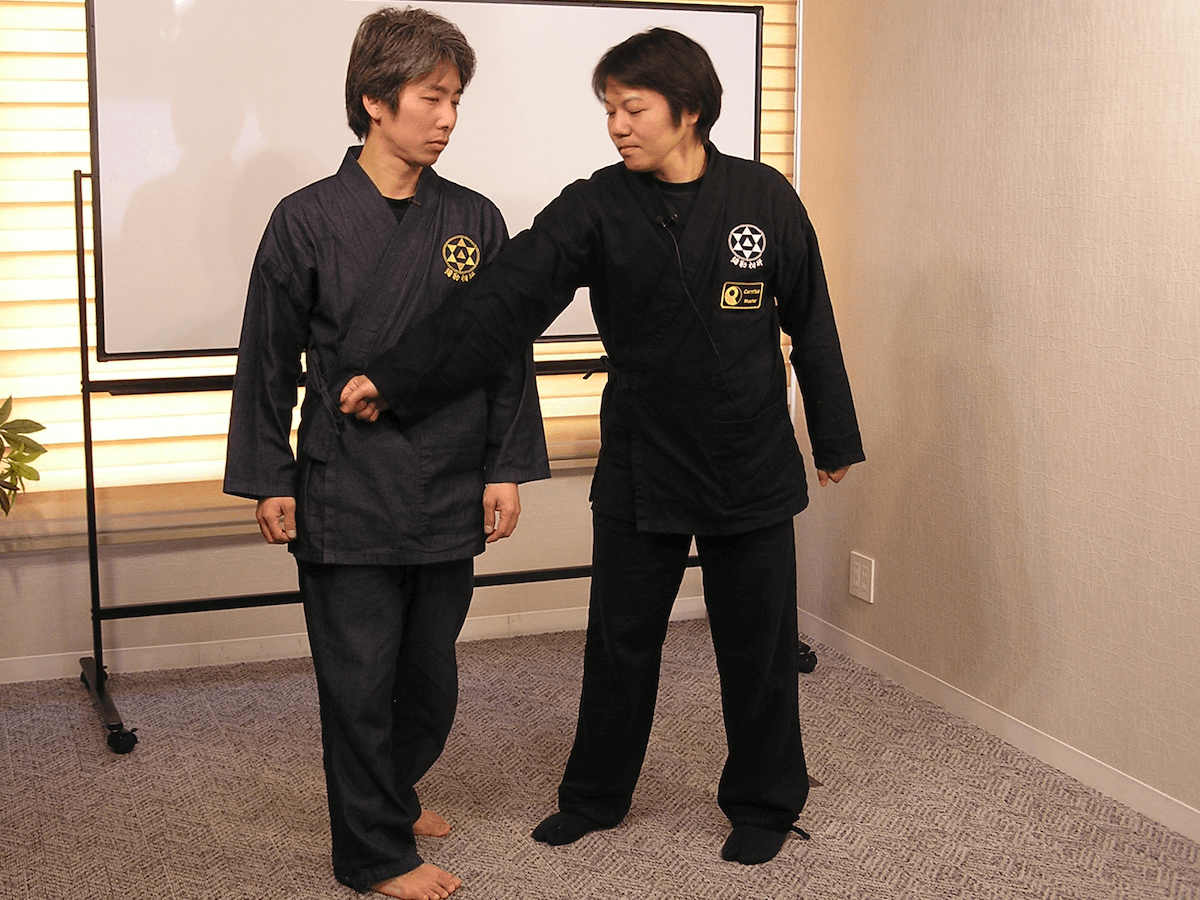
The "SESSHOKU-KAIHI" is a practice
for finding one's own axis.
-Engage with the essence of the other person
-Feel your own axis
-Finding freedom in inconvenience
This is the kind of practice
that is intended to be done in person.
It is a practice to experience
what is your own axis,
and also a practice of non-verbal communication to convey your "way of being" to others.
This practice is done in pairs and involves moving only as much as the other person pushes you.
This is a practice to communicate carefully non-verbally and interpersonally.
This is a practice to find one's own axis.
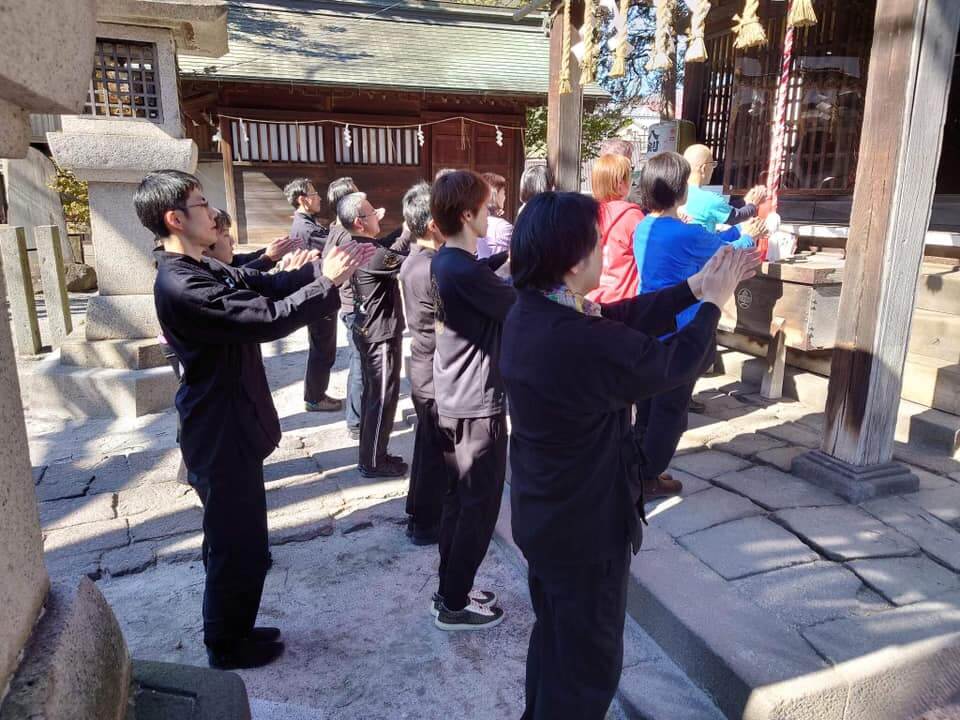
The "KOKOROZASHI-REI-HO" was created as
a "KATA" (pattern) so
that the importance of "Rei" can be experienced.
It consists of nine major movements,
hand seals, and a prayer (mantra).
Each movement,
hand seal, and prayer (mantra) is imbued with meaning,
and it is important to grasp what lies behind them,
which is not expressed in form.
In order to master "KOKOROZASHI-REI-HO," it is necessary to receive basic practice for correct Rei and Rei from an instructor at a certified practice session.
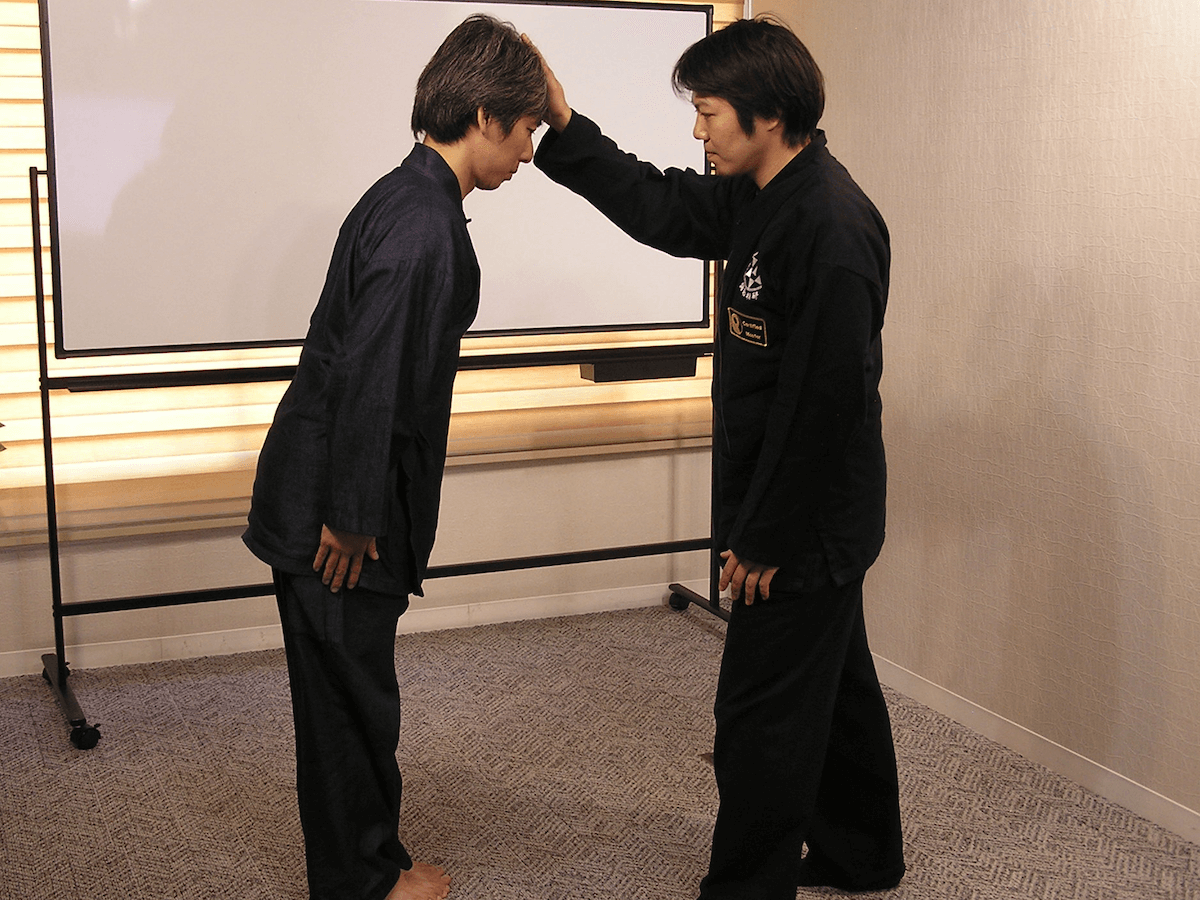
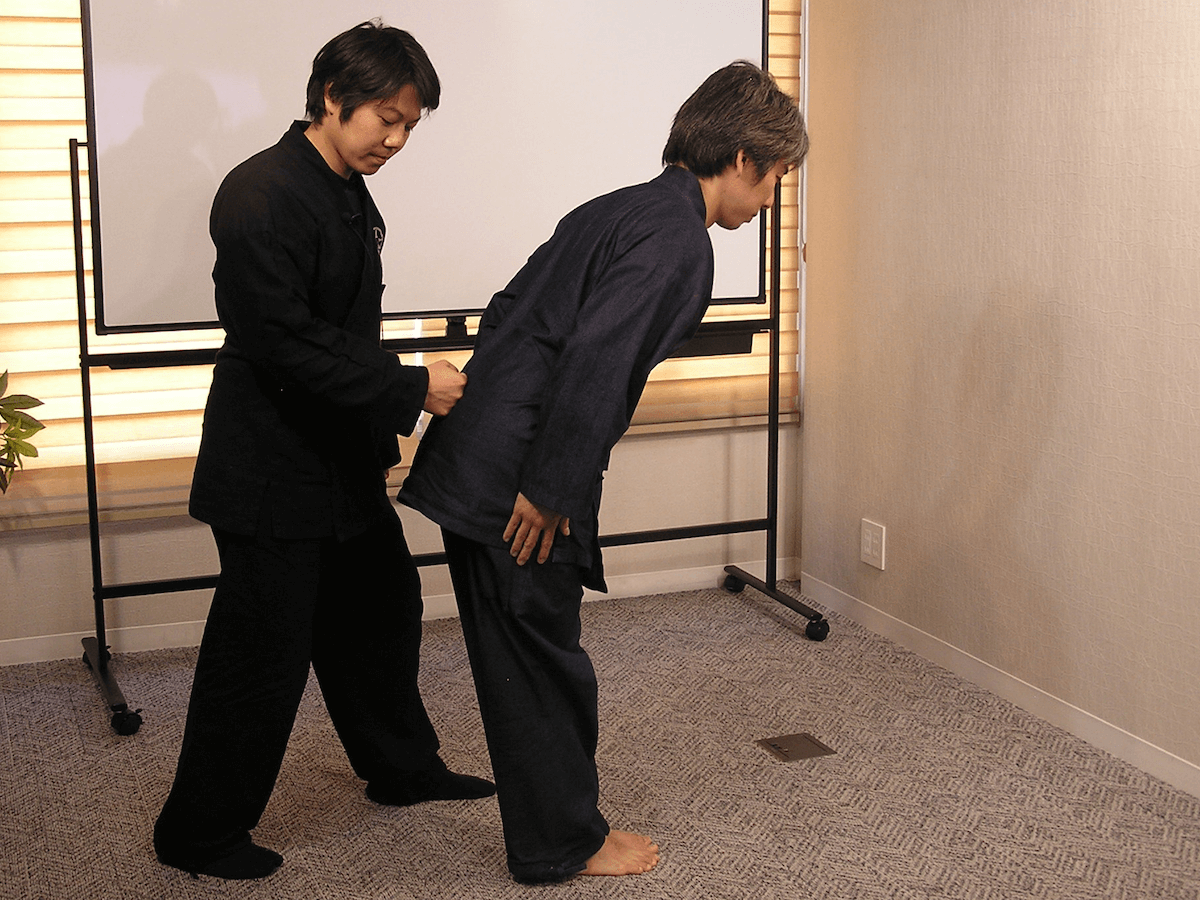
What am I living for?
What will I die for if I accomplish?
The purpose of life are called "KOKOROZASHI”.
"KOKOROZASHI” is a noble thought
that cannot be achieved alone,
and yet,it is also something that can be
passed on from generation to generation.
In order to realize noble thoughts
that cannot be done alone,
cooperation with others is also necessary.
The "KOKOROZASHI-REI-HO" is a way
to fulfill one's "KOKOROZASHI".
By making the "KOKOROZASHI-REI-HO" a habit,
you will be able to make actions toward
the realization of your "KOKOROZASHI"
a habit as well.
It's a simple concept,
The steps are as follows.
The reason why we do "REI-HO" is for the fulfillment of our "KOKOROZASHI".
What is the purpose of life, and what should we accomplish before we die?
The purpose of life are called "KOKOROZASHI".
Since the fulfillment of "KOKOROZASHI" cannot be done alone, it is necessary to cooperate with others.
It is "REI-HO" for the fulfillment of aspiration, so it is " KOKOROZASHI-REI-HO ".

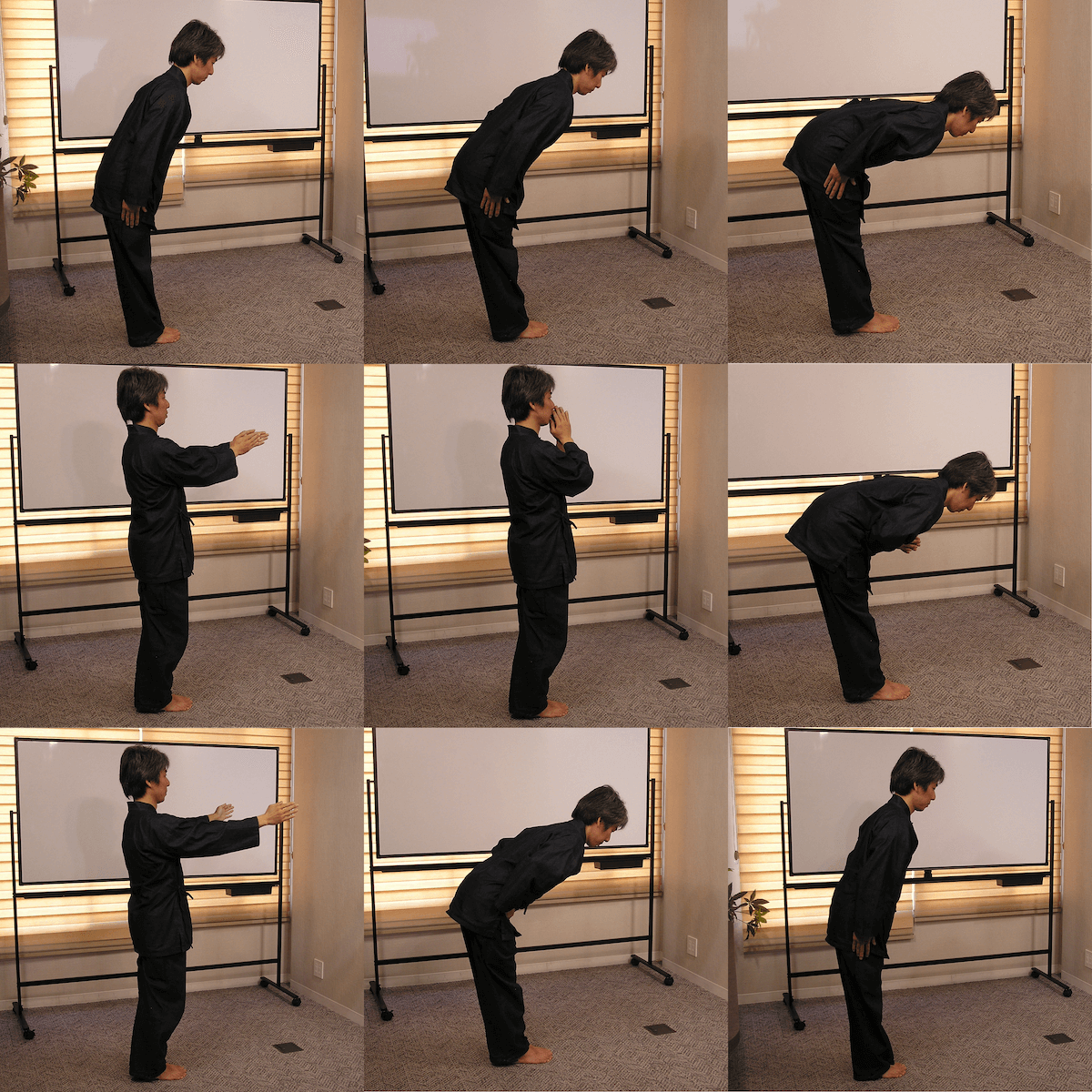
The "KOKOROZASHI-REI-HO" was
created with shrine visits in mind.
The "KOKOROZASHI" is also included in the ceremony,
so it is not a wish for something,
but a declaration of
"I will act for the fulfillment of my “KOKOROZASHI”".
It is a "KATA" (pattern)
that can be easily worked on at any age,
though, However, it is important to deepen the content of the "KATA" (pattern), and it is necessary to practice it continuously.
You can check to see if it is done properly, but it is important to actually experience it.
In the certified practice sessions, it is possible to experience the basics of “BUGAKU” and "KOKOROZASHI-REI-HO" from the very basics.
The "KOKOROZASHI-REI-HO" is an easy-to-work-with "KATA" (pattern) that can be deepened.
It is designed for shrine visits.
We hope you will grasp what lies behind the "KATA" (pattern).
What we teach in “REIDO” and what we want you to grasp through ”KOKOROZASHI-REI-HO” can be linked to Japanese cultural traditions.
Here, we provide basic knowledge through AI videos.
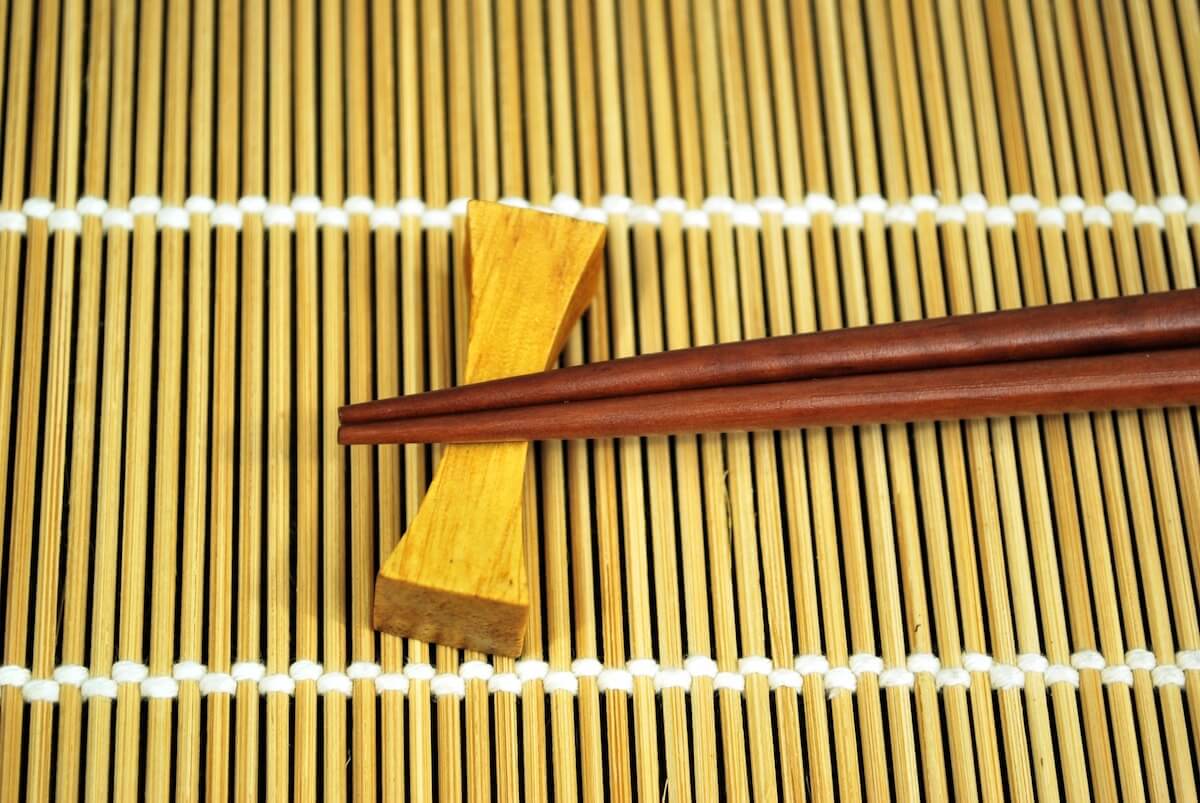
Perhaps our predecessors knew
that it is difficult to communicate by writing.
They may have thought
that if they were left as a "form" or "pattern,"
they would be handed down to the next generation
and even further generations to come.
It was not until the introduction of Kanji that writing came into use in Japan.
The language (spoken language) spoken in the Japanese archipelago before the arrival of continental culture in Japan (Yamato) is called the Yamato language, which is still spoken today.
It is believed that a peaceful society without the need for writing was established during the Jomon period.
Also, the oral culture, a culture based on the direct transmission of spoken language and skills to the next generation, continues to this day, for example, in the world of Takumi (artisans).
The Japanese cultural traditions are legacy in "form" or "pattern".
The Japanese way of eating is unique, and the first thing to do is to say "Itadakimasu" (thank you) before starting the meal.
When the meal is over, we thank the host with "Gochisosama" (thank you for the meal).
Chopsticks in Japan are considered to be the objects in which the soul resides.
They represent the spirit of treating food with courtesy and care, down to the smallest grain of rice.
In this way, we are passing on our thoughts and feelings to the next generation through shapes and forms.
It remains as many customs in our daily lives.

To understand shrine worship,
it is necessary to understand Shinto,
which has its roots in the Shinto religion.
“Shinto" was born out of the Japanese way of life.
It is the closest expression to "animism"
in terms of belief.
“Shinto" has a lifestyle of respecting cleanliness,
and deep within this lifestyle of respecting
cleanliness is a belief in the goodness of nature,
that "people are simple and pure by nature”.
There are two representative words,"Jomei Shochoku" and "Keishin Suso”.
"Jomei Shochoku" means a clean, bright, righteous, and honest heart.
"Keishin Suso” means to respect all things and revere ancestors.
Our ancestors have lived their lives in relationship with nature.
The forces of nature provide us with blessings, but they are also ferocious.
Our ancestors felt the invisible and mysterious power of such natural phenomena.
Our ancestors lived in harmony with nature based on the value that nature is something to be harmonized, not controlled or even conveniently modified by man.
A sociological researcher from the U.S. came to Japan and had trouble translating the word "Shinto" into English.
Shinto is not a "religion," and there is no " founder," no "scripture," and no "doctrine.
It is lived with life and the seasons, so the researcher named "Shinto" as "Japanese Life”.
Our ancestors, who lived in harmony with nature, prayed for a bountiful harvest in spring, protection from wind and rain in summer, and thanksgiving for the harvest in autumn.
In autumn, they held festivals to give thanks for the harvest.
Through festivals, they have passed on to the next generation in the form of "matsuri" the desire for nature and human beings to live together, for local communities to maintain harmony and a sense of unity, and for families to wish for the prosperity of their descendants and the unlimited development of the region, Japan, and the world.

Although worship tends to be formal,
there are actually no strict rules
about how to conduct oneself
when visiting a shrine,
so it is important to have a sense of prayer.
When you visit a shrine,
you may see a sign that reads
"Ni-Hai, Ni-Hakushu, Ichi-Hai" (two Rei, two clap, one Rei)
or "Ni-Rei, Ni-Hakushu, Ichi-Rei" are often displayed.
In “BUGAKU”, there are three main types of “OJIGI” Yu, Rei, and Hai.
The torii gate is meant to separate the outside from the inside of the shrine, indicating that it is a "Shinto shrine area”.
Passing through the torii gate is the "SANDO”(approach).
The approach road leads to the place of worship.
Many of the paths are covered with gravel, so that visitors can calm their minds by stepping on the clean stones and praying in the best possible condition.
We tend to be formal and formalistic, but there are actually no strict rules about how to conduct oneself when visiting a shrine.
When you visit a shrine, you may see a sign that reads "Ni-Hai, Ni-Hakushu, Ichi-Hai" (two Rei, two clap, one Rei)
or "Ni-Rei, Ni-Hakushu, Ichi-Rei" are often displayed.
Both "Hai" and "Rei" are types of ”OJIGI” and have a variety of names, but we at ”BUGAKU” teach three main types of bowing names: "Yu", "Rei", and "Hai".
A mirror is placed in the place of worship.
The mirrors are meant to be an important reminder to face one's reflection in the mirror and reflect on oneself.
It is a wisdom bequeathed by our ancestors as a mechanism to recognize ourselves as we are, to remember who we are, and to feel gratitude for everything we do.
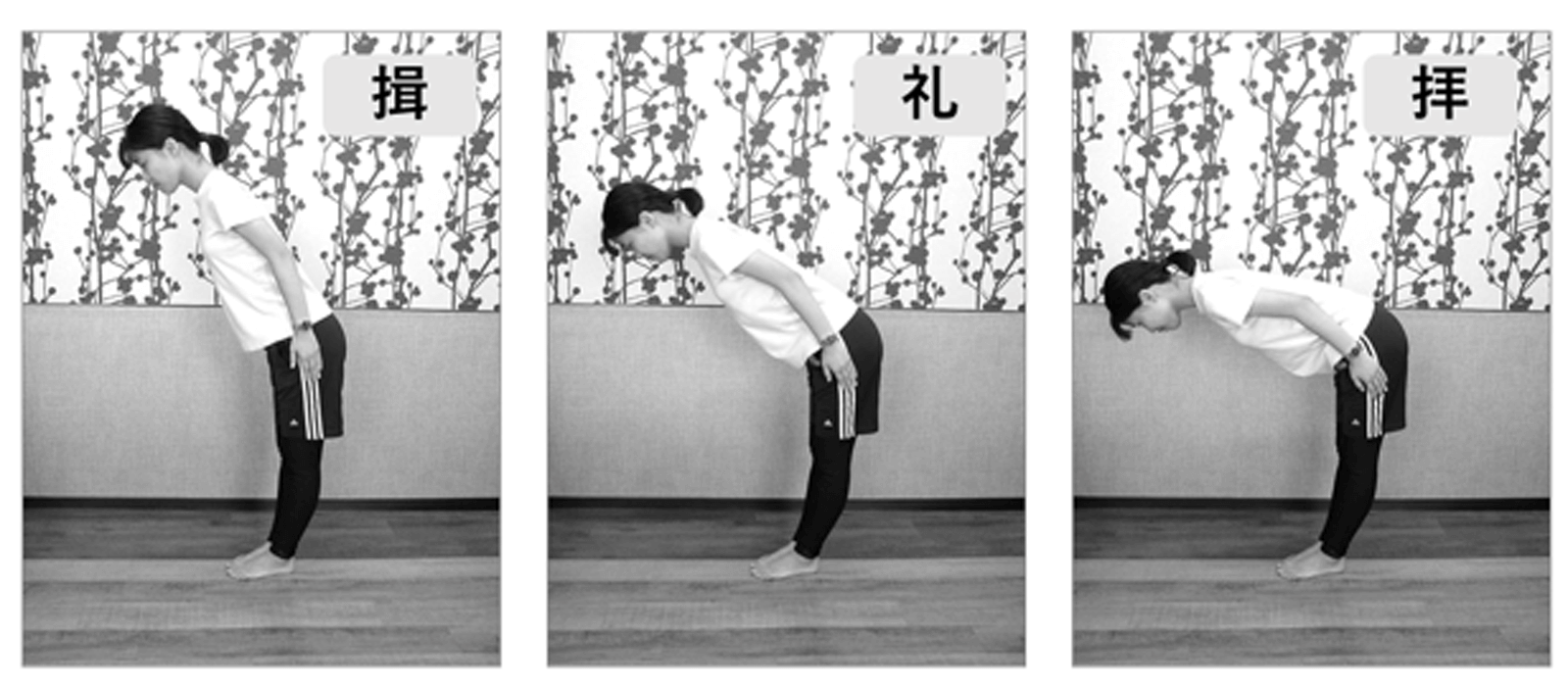
There are various names for the different types of “OJIGI”, but there are three main types of “OJIGI” performed while standing: "Yu," "Rei," and "Hai”.
It is used in different situations, but should be considered the same as normal manners.
To do it correctly, it needs to be checked, but first we will tell you how to do it.
“OJIGI” is intended to be neutral, but not just for your own benefit.
| Style of “OJIGI” | Angle of the body | Meaning | |
|---|---|---|---|
| 揖(Yu) | About 15 degrees | Greetings | Used as a greeting throughout the day. |
| 禮(Rei) | About 30〜45 degrees | Respectful salute | A sign of showing respect to guests or superiors. |
| 拝(Hai) | About 90 degrees | Most respectful salute | The deepest for of the ”OJIGI",used for apologies or to show deep thanks. |
There are various names for the different types of ”OJIGI”, but there are three main types of ”OJIGI” performed while standing.
Although they are used differently for different occasions, they can be thought of as the same as normal manners.
It needs to be checked to be done correctly, but it is done as follows
(1) Stand up straight, hands directly next to each other and close the toes of your feet.
(2) Keeping your neck and back straight, angle your hips as if you were pulling back.
The important point is to keep the neck and back straight without bending.
It is also important to do so slowly and carefully.
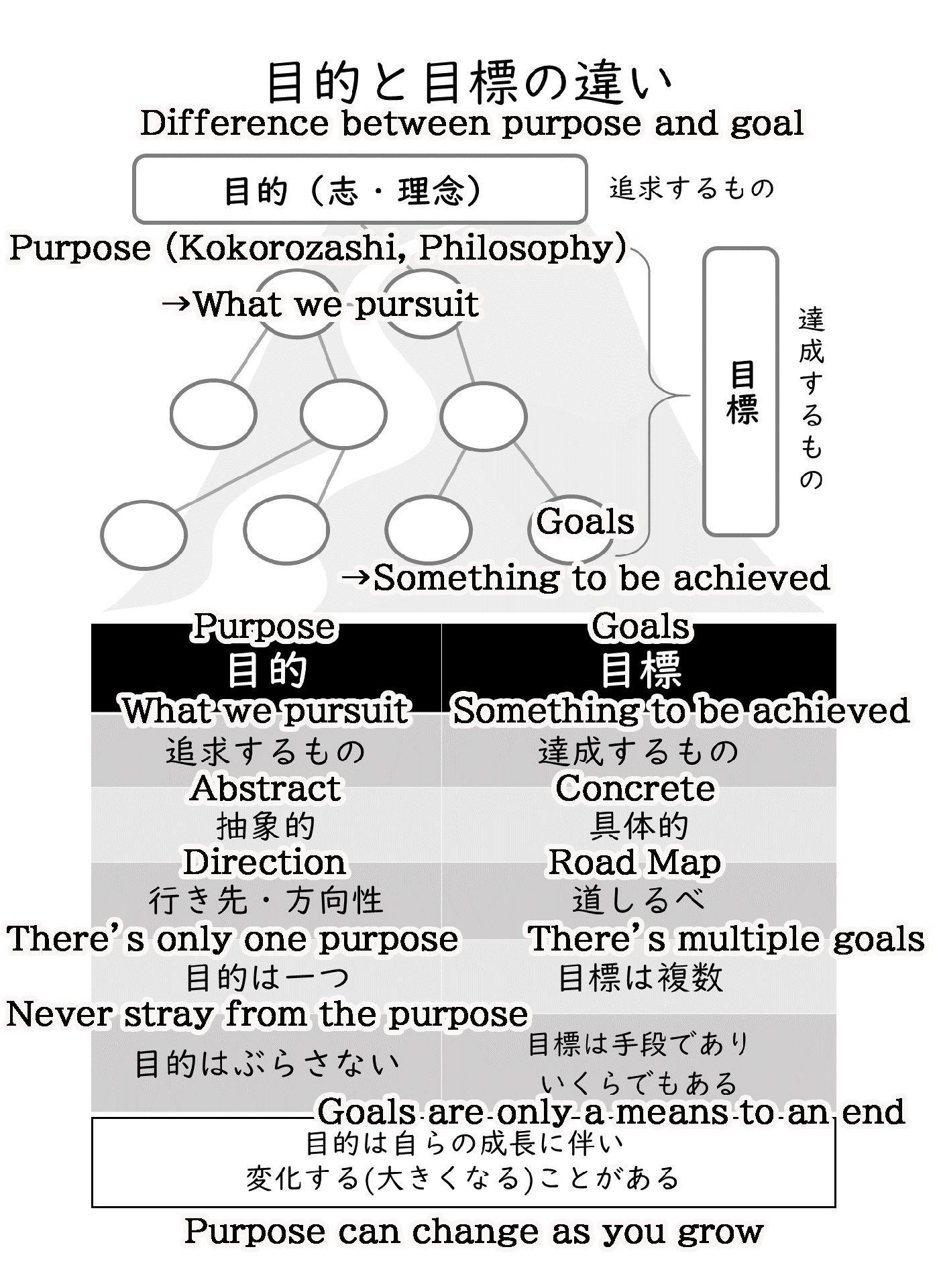
“KOKOROZASHI” is the purpose of life; in other words, it is the "meaning of existence" or "mission”.
The "purpose of life" is a direction, which we pursue over the course of our lives.
The difference between "purpose" and "goal" is clear.
“Goals" are milestones/roadmaps to realize and achieve "purpose".
If the purpose is not determined, the goal cannot be determined.
For example, if "to convey the joy of mountain climbing by climbing mountains" is an "KOKOROZASHI" (purpose), then "to climb Mt. Fuji by a set date" is a goal.
Furthermore, "climb Mt. Fuji by a set date" can be subdivided.
If your life purpose, your "KOKOROZASHI", is clear,
-What you will learn
-What kind of people you want to get involved with
-What information do I need?
You will be able to see the choices you need to make, and your life will be simpler and less confusing.
You will learn to develop the "decisiveness" of decisions and refusals.
There are five structures in the martial arts regarding "KOKOROZASHI".
1. To draw out "KOKOROZASHI"
2. To share "KOKOROZASHI"
3. To sublimate and engrave the "KOKOROZASHI".
4. Make "KOKOROZASHI" into a goal.
5. Continuation and habituation of actions to achieve the goals.
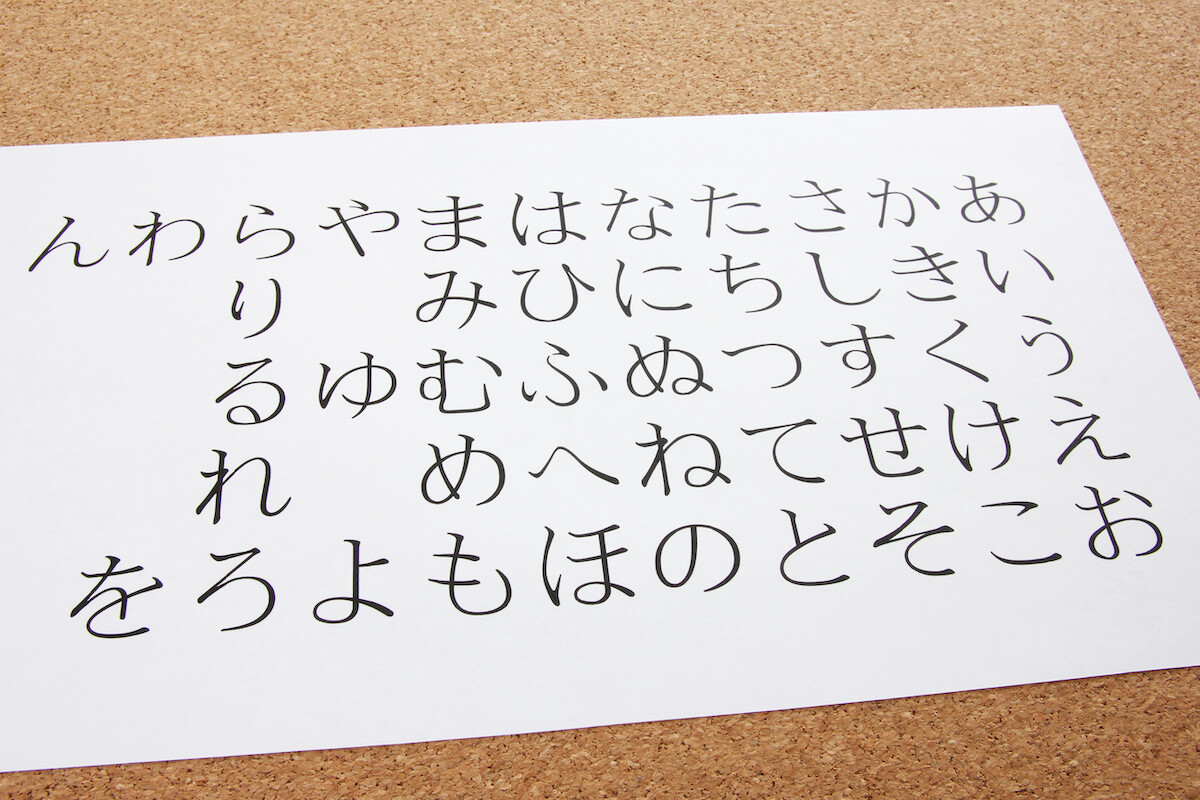
The ancient "Kototama" philosophy
has been handed down to the present day,
and words have been treated with great care.
The spoken language spoken in the Japanese
archipelago before the arrival of
continental culture in Japan
is the Yamato language.
Each sound has its own meaning.
The "Kototama" has been carried on.
-The "word of congratulation".
-Mantras
-Mention
The "KOKOROZASHI-REI-HO" includes "Mantra" and " Mention".
Our ancestors believed that words have spiritual power, and that righteous words born from a beautiful heart will bring good results, while violent words born from a violent heart will bring misfortune.
They felt the mysterious power of words and treated them with reverence and care.
Using beautiful words to create beautiful things.
Waka poems and stories were created by the "Kototama" philosophy, and Japanese culture has been nurtured by this philosophy.
Even today, there is still a custom not to use "abomination words," which are words of ill omen, at weddings and other celebrations, and at the end of the ceremony, "Ohiraki" is said to wish for future development.
The Yamato language is the language spoken in the Japanese archipelago before the arrival of continental culture in Japan.
The Yamato dialect is the origin of the "Kototama" philosophy, in which each sound is imbued with its own meaning.

While it is possible to perform a pattern by watching videos and reading text and absorbing it as knowledge, it is important to actually experience it.
For example, you cannot tell the taste of a meal from a picture alone, but you can recognize whether it tastes good or not by actually eating it.
Even if you think you understand it in your head, there is nothing better than actual experience.
In the certified practice sessions, it is possible to experience the basics of “BUGAKU” and ”KOKOROZASHI-REI-HO” from the very basics.
Masters and leaders certified by the "Reido Universal Federation" hold practice sessions in various locations.
Please experience "Bugaku" in a real setting.
A book has been published on "BUGAKU."
Please read it as it contains some of the information we have been sharing with you and
some information we have not yet shared with you.
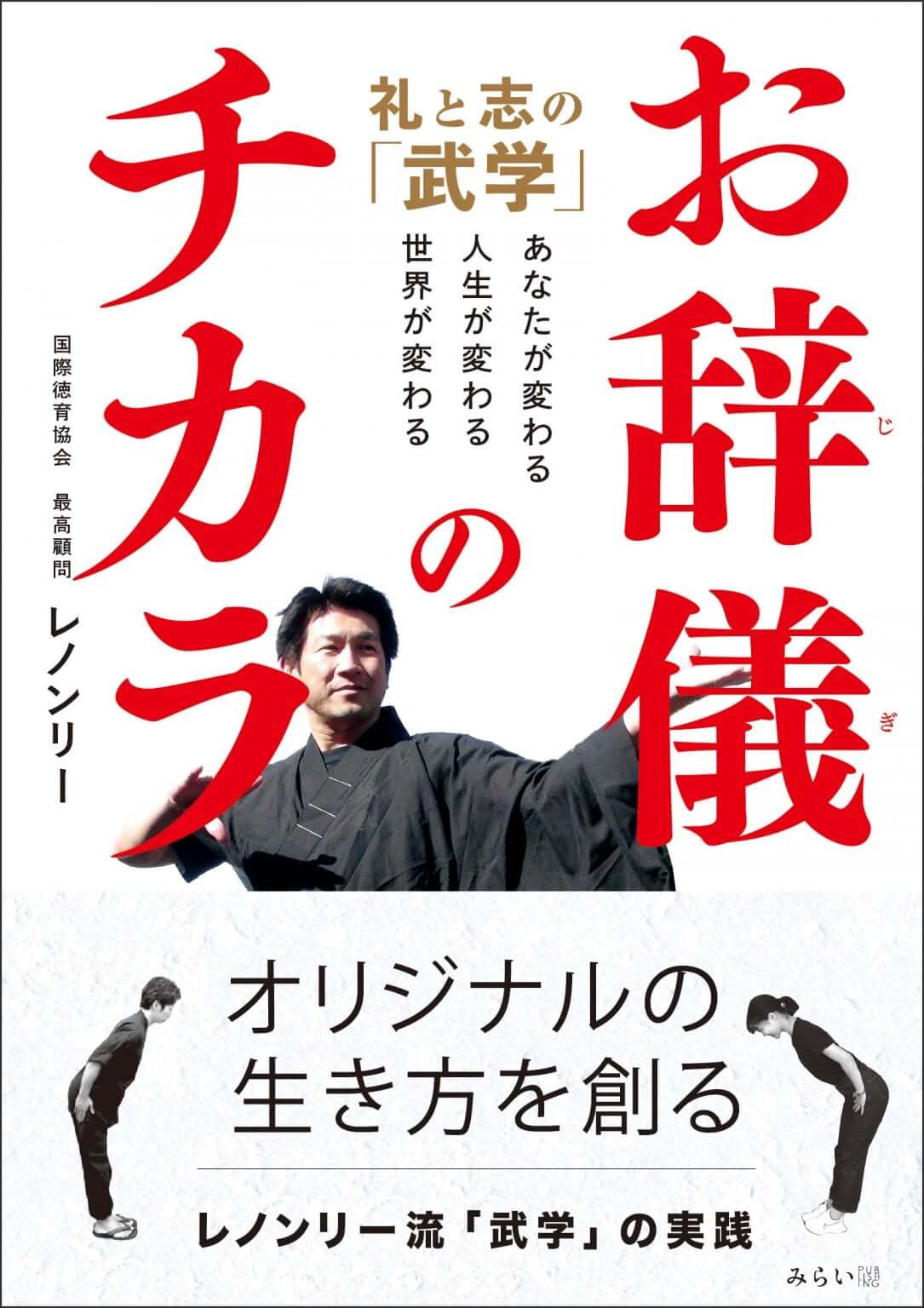
Publication:MIRAI PUBLISHING
Release:2020/11/13
Price:1,650yen
※This is the book written in Japanese.
For those who are struggling with a lack of hope in life, the author, a world champion in the martial arts, will guide you through the process of "OJIGI" to increase your vitality and achieve results.
The book explains in detail and carefully how to practice to uncover your “KOKOROZASHI” and turn your life around.
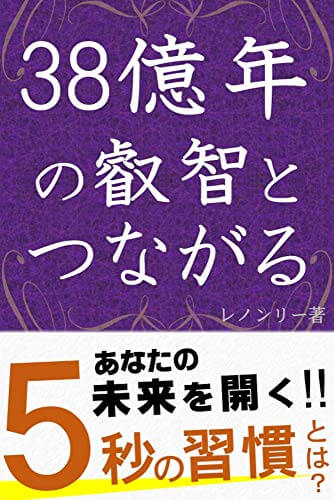
Publication:KYOUIKU, LLC
Release:2019/4/22
Price:369yen(Kindle Edition)
※This is the book written in Japanese.
The right answer for you is ......
Your "body" knows, not a book, not your parents, not an authoritative teacher or a successful person.
This book explains how anyone can control "invisible energy" in just 5 seconds.

Publication:KYOUIKU, LLC
Release:2020/7/15
Price:99yen(Kindle Edition)
※This is the book written in Japanese.
This book is an overview of "BUGAKU".
Many of you may imagine "martial arts or combat sports" from "BUGAKU," but your imagination will probably be betrayed.